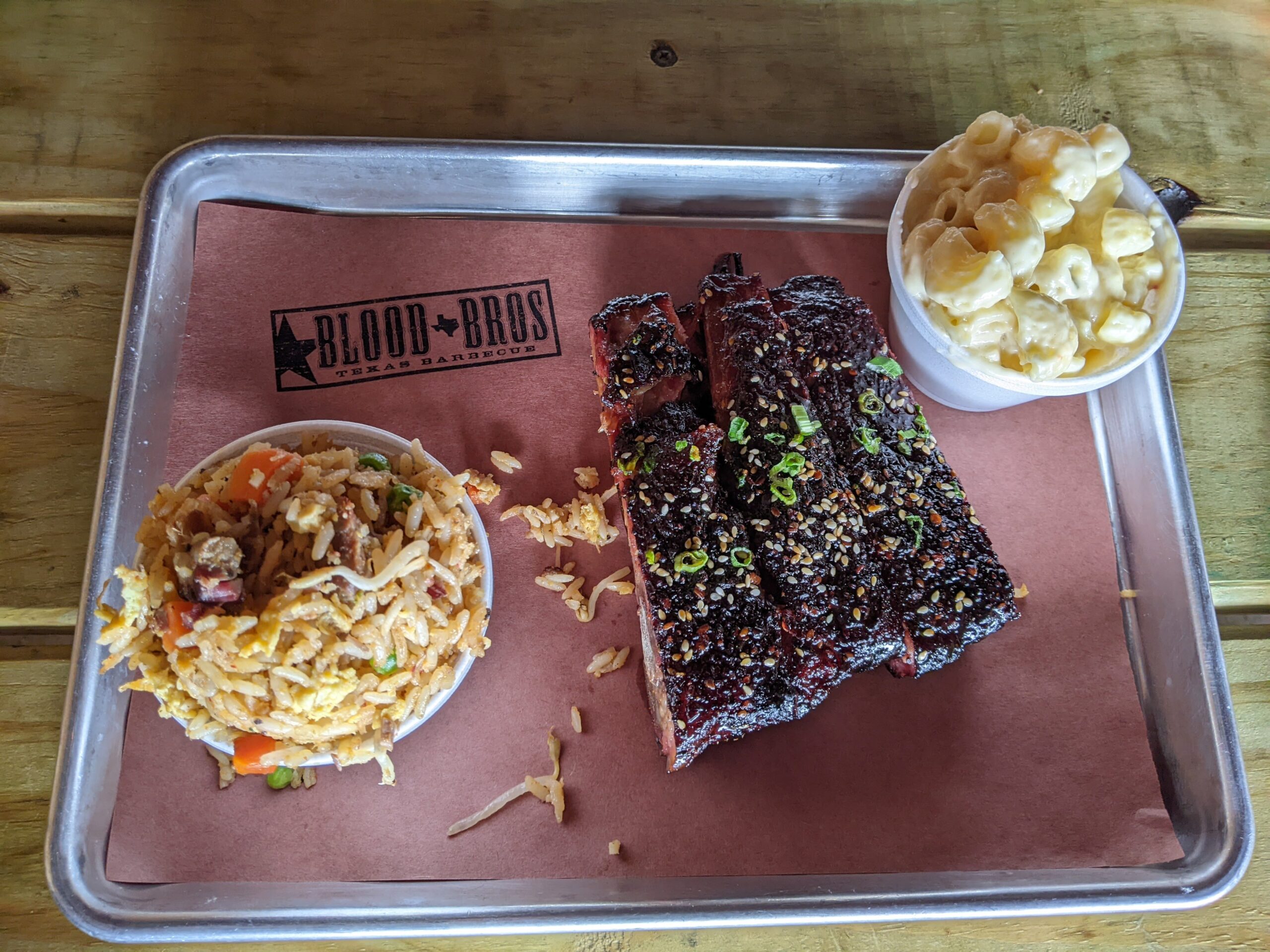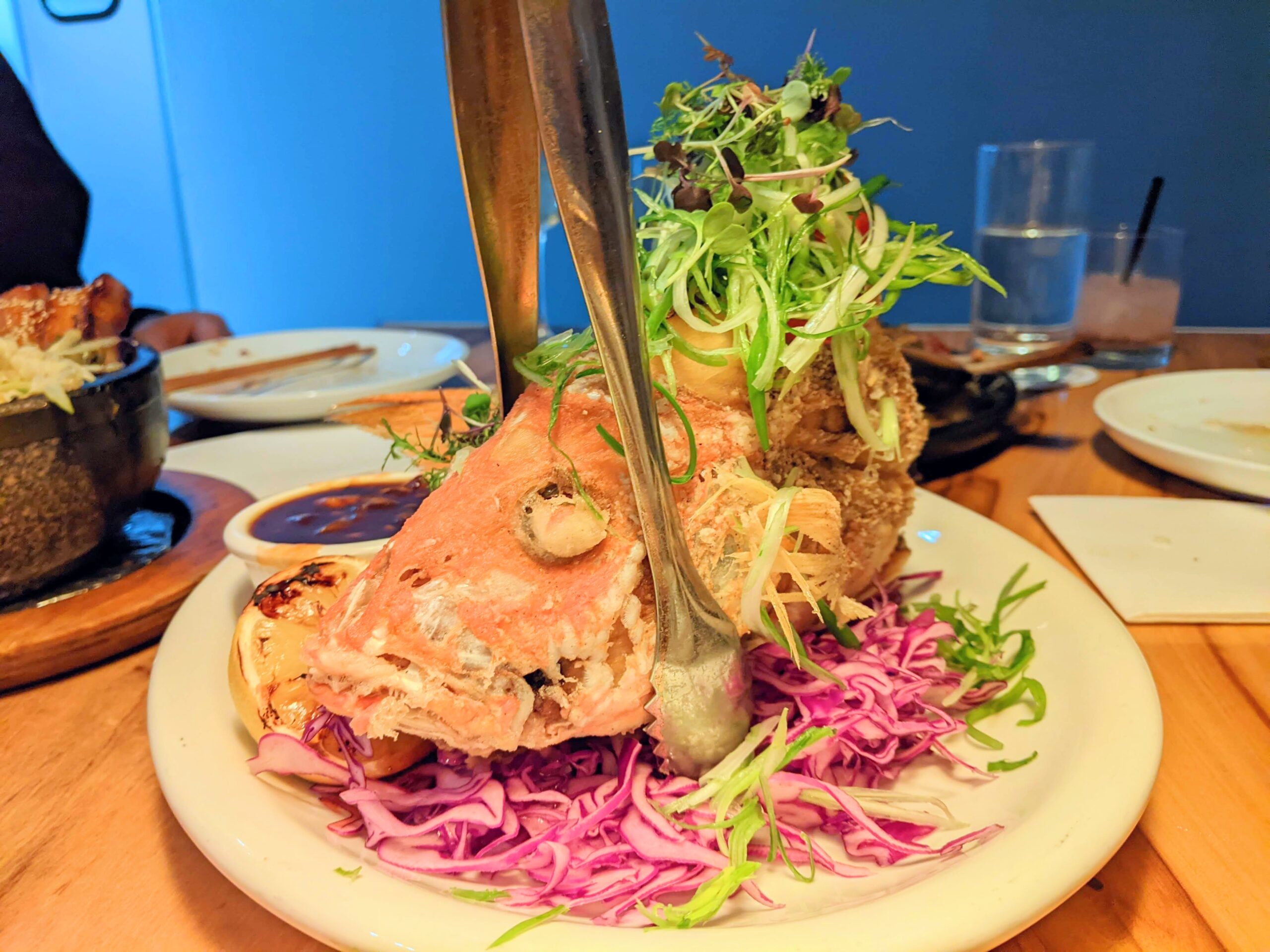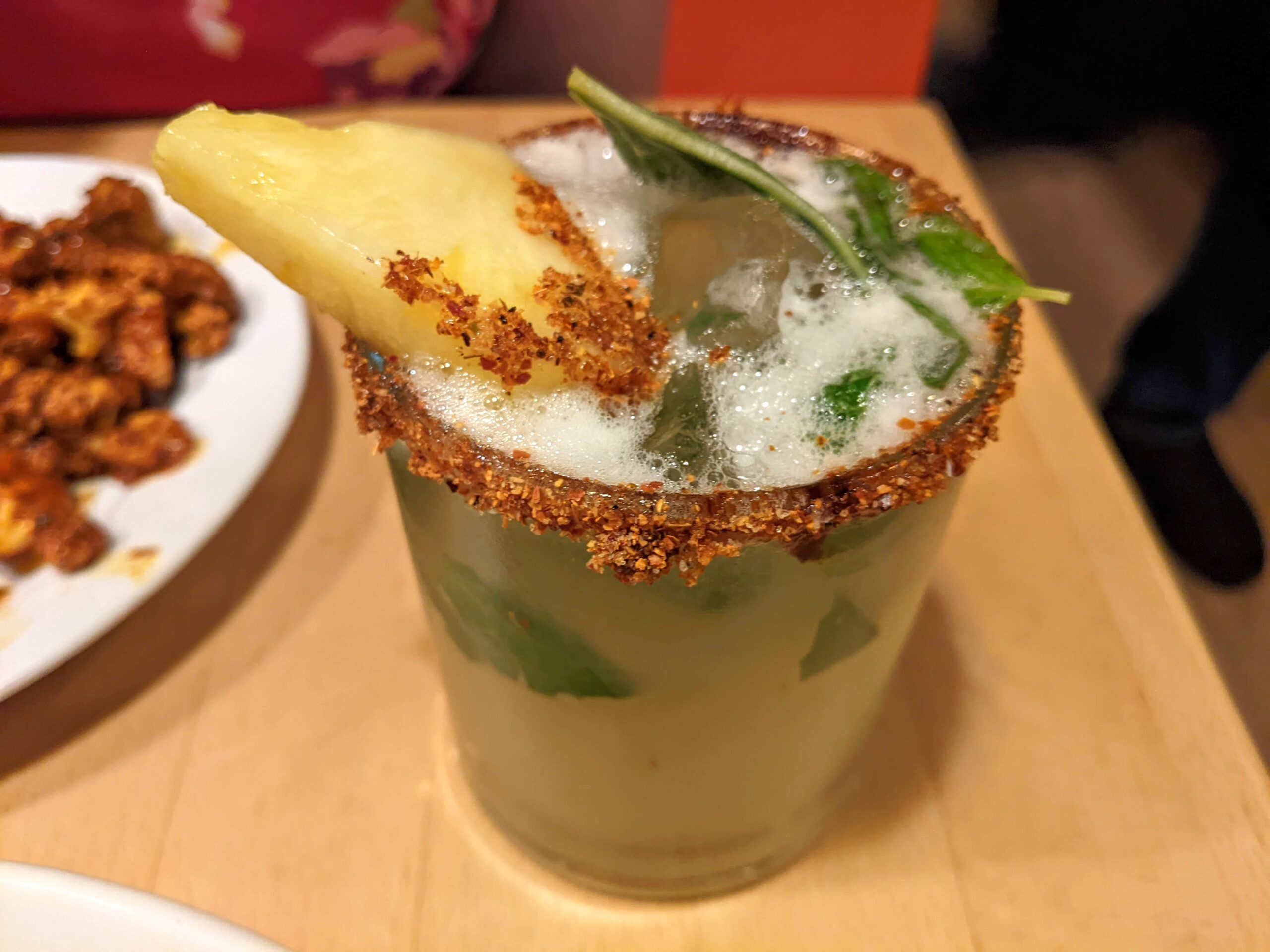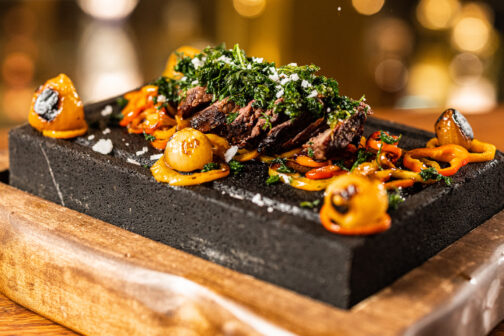Yesterday, the James Beard Awards announced the first-ever winner of Best Chef, Texas: Iliana de la Vega of El Naranjo in Austin. First, let’s say congratulations to de la Vega and her team and get excited for many more years of Texas winners. (Dallas also had its first champion in nine years, in a media category: Texas Monthly’s José Ralat won best column for his Tex-Mexplainer.)
As one of the tasting judges for Best Chef, Texas, I ranked El Naranjo as the top choice on my ballot.
Now it’s time to really spill the beans. Since February, I visited all five of the contenders for Best Chef, Texas, and I have thoughts. This post is in three parts: first, I’ll go through my ballot and speak frankly about each restaurant; second, I’ll suggest reforms to the awards process; finally, I’ll name the Dallas restaurant that should win the prize next year. Not get nominated. Win, dammit!
(I don’t think a ballot disclosure violates the judges’ confidentiality agreement, which covers internal processes, chef misconduct allegations, and the nature of judges’ conversations with each other. My role as a judge is set to be disclosed by the Foundation with the final results.)
My Texas James Beard Award Ballot
5. Quy Hoang, Blood Brothers BBQ, Houston. Fifth place is last place, but I liked Blood Brothers. The sides, in particular, are killer (get the brisket fried rice). On the Wednesday when I visited, there was a special of pork ribs with spicy gochujang glaze, and it was dynamite. But the brisket was a little bit tough in places, and the cookie I got for dessert was produced by an affiliated company.
(Update: Blood Brothers tells me that the other business, Luloo’s, is“our company” with another partner, pastry chef Alyssa Dole. I have changed the phrase “bought in from another” to“produced by an affiliated” above.)
To be blunt, Blood Brothers merits recognition, such as its Texas Monthly Top 50 finish, but should not have made the final round. If we needed a second Houston restaurant, Bludorn is sensational and its brunch alone is worth the drive. If we wanted a barbecue spot in the finals, Distant Relatives in Austin has an equally compelling food culture with more consistent smoked meats. If we judge on merit alone, Dallas’ own Revolver Taco Lounge or Petra and the Beast would do a list like this proud. Oh well.
4. Tiffany Derry, Roots Southern Table, Farmers Branch. I’m going to get some hate mail for this. But Roots is brand-new—it turns one year old this Saturday—and it should be very hard for such a new restaurant to be named the best in a whole state. Because it has no track record of consistency, a new place should be blindingly great to be named the best. It should be so good, the rest of Texas gives up in awe.
That did not happen. A recent visit to Roots specifically to judge this award revealed inconsistencies in cooking and seasoning, including some aggressively salty dishes. We were also confused by a springtime special, a sort of open-faced sushi roll with extra pieces of fish set to the side of the plate. Aside from the black-eyed pea hummus—still great—the menu wasn’t as reliable as when I nominated it for this award last fall. This could have been a random bad night. (Derry was absent.) It might have been a sign of growing pains.
But let’s be hopeful. Every new place changes as it matures. Great restaurants have growing pains, too. Give Roots time. Let it develop. There will be more awards. If it can stay consistent, Roots’ year will come.
3. Christine Ha and Tony Nguyen, Xin Chào, Houston. Xin Chào is not quite a year older than Roots, but it has swagger. Ha and Nguyen are youngsters whose game is to take the Vietnamese-American traditions they grew up in and play with them, introducing their own twists and riffs. The beer and cocktail lists are well-considered (wine not so much), and the food is spectacular.
A Houston friend tells me Xin Chào can be inconsistent, but the real reason I’m not ranking it higher is because I had three beers before I got there. Every restaurant seems better if you’re tipsy. So I don’t fully trust myself on this one.
2. Steve McHugh, Cured, San Antonio. McHugh should have won this award already. He’s been a San Antonio fixture for years, he’s a nationally-renowned charcuterie master, and he’s got a feel-good story to go alongside his community leadership. (The name “Cured” refers to both the restaurant’s meats and the battle its chef won against cancer.) Some of the culinary trends that are now part of Texas’ regular restaurant diets were pioneered by Cured. I don’t know who won the Beard Award in, say, 2019, but it should have been McHugh instead.
But as much as I still enjoy the restaurant—I’ve been going every year or so since it opened, and pigged out on whole-hog-topped poutine in April—this feels like saying that, whatever movie Amy Adams makes next, they should give her the Oscar for it because they so obviously screwed up not giving her an Oscar for The Master. Yes, that was a mistake. (Which jerk won that year anyway? Never mind. Don’t tell me. I’ll just get angrier.)
The Academy has to vote based on her next movie, and I have to vote based on the food restaurants are currently serving. Oddly enough, the same is true of the top chef on my ballot, who has also often been recognized without ever winning.
1. Iliana de la Vega, El Naranjo, Austin. This was an easy choice. My meal at El Naranjo was superb in every way: a great menu of Mexican food cooked with precision, seasoned with balance, plated with visual flair, and served with great cocktails. With each dish, we were delighted by how right the food was; maybe it’s not as creative or rebellious as Xin Chào, but it’s thoughtful, considered, and consistently prepared exactly the way you’d want it to be. Imagine the ideal ceviche, how the fish and seasonings and acids would be balanced—and that’s how it is at El Naranjo. Imagine the ideal smoky-but-not-too-much mezcal cocktail—and that’s how it is at El Naranjo. Imagine salsa macha you want to drizzle over every food in your pantry—and El Naranjo has it.
Iliana de la Vega is, like Tiffany Derry, a community leader and role model. She is, like Steve McHugh, someone who should have won this darn award already. Her restaurant is, like Xin Chào, a total delight. It’s also been open for 10 years, enough time to prove its consistent, continuing merit. (Before that, it was an Austin food truck and, even earlier, a restaurant in de la Vega’s native Oaxaca.)
Bottom line: dining at El Naranjo made me happy in the way that all the best restaurants make you happy. I can’t wait to go back.
How to Fix the James Beard Award Judging Process
Here’s the punchline: I didn’t have to go to all five restaurants in order to vote. I wasn’t even supposed to. If you’re thinking, “why did that idiot judge Xin Chào while drunk?,” the answer is that the James Beard Foundation did not ask me to go there.
I was supposed to just go back to Roots. Then all the judges were meant to hop on a conference call and discuss their local places, and we were supposed to vote based on what other judges told us about their own cities. But I went to Houston for a wedding and San Antonio for a conference; suddenly hitting all five finalists in four months became easily doable. My conscience made me do it.
The ideal fix is to have judges’ research stipends—yes, we got money to spend—cover travel expenses. At the start of the process, potential judges can be vetted in part on their willingness to spend one or two weekends traveling, with the Foundation paying for meals, motels, and gas. The beginning is also the right time to explain that stipends can be used on any restaurant in the category, not just the one a judge is assigned. (I found out only last week that the Foundation would reimburse my non-Roots meals.)
An alternative would be to select judges a full year in advance and convene them immediately to give each other recommendations. Are you coming through Dallas for business this fall? Try this place. Oh, you’ve got a lot of friends in Austin? Take them to that new spot. Summer road trip with the kids to the Johnson Space Center? Make time for this restaurant.
As an added bonus, early research can allow judges to assess restaurants’ consistency over time.
Finally, of course, the Foundation needs to consider two bigger changes: renaming “Best Chef” to “Best Restaurant” to recognize that a restaurant is a team effort, and updating its confusing definition of “nominee.” (Currently only the finalists are nominees; semifinalists somehow are not.)
A Preview of Next Year’s Champion
When the initial list of 20 semifinalists was revealed, a lot of discussion online focused on Dallas’ strong showing: four names, plus two more in the suburbs. (In case you missed them: Ebesu, Homewood, José, Petra and the Beast, Revolver Taco Lounge, and Roots Southern Table.)
But online, some circles were asking a grumpy question: where the heck was Meridian? The creative Brazilian restaurant with the gorgeous patio had been named D Magazine’s restaurant of the year, and gotten praise from others, but it was nowhere on Beard’s list.
As the guy who nominated Meridian, and as the guy who spent part of an evening writing an essay attesting to chef Junior Borges’ integrity and character, I was surprised too.
After the snub, I talked to judges around the state. Three or four people told me that they’d visited in the very early days, in the restaurant’s first few months of business. They’d run into simple new-restaurant jitters, like undercooked noodles, awkward waiter speeches, and a freezing-cold dining room. They also didn’t understand how some dishes related to Brazil.
But those were early days. Here’s the thing about brand-new restaurants: they almost never continue to perform at the exact level they start out. Many restaurants start hot, then slow down as cooks move on to new jobs, managers realize they’ve miscalculated food costs, or the hype fades away. In Dallas, particularly, restaurants going downhill are a tale as old as time.
And then you’ve got the restaurants that keep getting better. All the great restaurants do. A Beard Award-recognized chef once told me that if he had his way, critics wouldn’t be allowed to visit for the entire first year. The best work from great restaurants comes after critics have moved on, once the team’s chemistry has gelled, once the chef has gotten in a creative groove.
This is very clearly happening at Meridian.
It’s not just that they figured out how to cook pasta. Meridian is now relaxing into its identity, expressing its Brazilian-global roots more clearly, and developing inspired new dishes every season. Its employees seem to be having more fun. Its culinary style is setting a clear, individual tone. Even though the thermostat is still finicky (and the dining room much too loud for a high-end experience), Meridian’s patio is perfect. All of my visits have been better than the previous one. The initial promise is being fulfilled.
I gave the out-of-town judges several names of restaurants in Dallas and Fort Worth to visit over the next 10 months for next year’s awards. We’ll see what they think. But now that I’ve been to all five of this year’s contenders, and tried other restaurants besides, I feel pretty confident.
Bludorn, March, and Squable are real contenders in Houston; Aga’s and Ninfa’s are sleepers. Early hype from Austin surrounds Nixta Taqueria (which won the 2022 Beard for Emerging Chef) and polished Guyanese spot Canje. Clementine, in San Antonio, looks like my kind of place, and Steve McHugh still needs his medal. Fort Worth’s La Onda and Don Artemio should make strong bids. Here in Dallas, Revolver, Petra, and Homewood are all finalist or champion caliber. The judges will surely give second chances to Xin Chào and Roots.
But if Meridian keeps to its current trajectory and continues to deliver on its promise, serving food you can’t find anywhere else in the United States, it will be hard to vote for anyone else.
Get the SideDish Newsletter
Author











